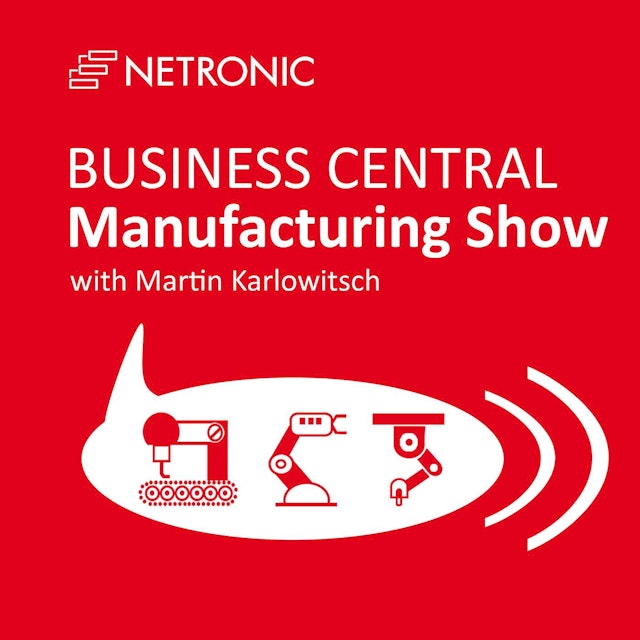I met with Ken Sebahar, who is the President of Solution Systems, Inc., a Microsoft Gold-Certified Partner near Chicago, Illinois. Ken and his colleague Michael host the great podcast “A Shot of Business Central and a Beer” in which they provide listeners with news and updates related to Business Central in an entertaining manner.
Of course, with a podcast like this, beer was the ideal hook for our conversation. At the beginning of our conversation, you can learn which of us enjoys an advent calendar with German beer. If you listen until the episode's end, you also hear who loves drinking a hot wine punch at a Christmas market. Well, after and before chatting about drinks, we flew full circle on Business Central production orders, jobs, and assembly orders.
Once we had the beer advent calendar thing clarified, we started to differentiate typical manufacturing companies. Ken used two key criteria. I would call one criterion the "degree of process repeatability and predictability". Dimensions of this criterium are item structure, BOM, routings, operations, scrap percentages, etc. The second criterion to look at is both the billing and the cost recognition process. The combination of those criteria helps you to figure out if a manufacturer tends to qualify either for the Business Central manufacturing module or for the Business Central jobs module.
However, oftentimes the decision between the jobs and the manufacturing module is not an either/or decision. Instead, Ken favors combining both functionalities for those manufactures with individual, project-type deliveries that base on standardized, but proprietary items. Combining jobs and manufacturing enables customers to benefit from all WIP billing, costing, and revenue recognition advantages that the job module brings.
Likewise, customers can add all required items as job planning lines to the bespoke job - independent if those items get purchased or manufactured. The integrated Business Central planning engine sees the demand from the job planning lines and creates suggestions in the planning worksheet.
That way, customers can create production orders. When they complete them, they can output the items into inventory. Then, these items can be used by the job journal to consume those manufactured items. Thus, the cost for making those items get associated with the project.
However, customers that build bespoke items do not necessarily need to work with production orders. Ken not only points out to assembly orders. He also positions them as "manufacturing light" and precisely describes the sweat spot for assembly orders as follows:
- Very simple manufacturing process
- Very predictable amount of time that it takes to produce each unit
- Very little scrap, and no variance in the amount of scrap
- Smooth operation
So ultimately, Ken recommends that manufacturers with a project-type of delivery look a jobs and either production orders or assembly orders. He is also very clear about the fact that manufacturing allows taking into account much more parameters for both planning and scheduling.
Interestingly enough, this brings us to the Business Central function called capacity constrained resources. Ken shows a very pragmatic approach to when and how to use this function. However, other than many other folks I spoke about it before, he manages to discover and justify a place for that function.
This pragmatism truly inspired me, and we kept going for more pragmatic scenarios of using and implementing Business Central jobs, manufacturing, and assembly. Ken coined the phrase "crawl, then walk, the run" and agrees that we currently observe a paradigm shift in implementing EPR projects.
The podcast Business Central Manufacturing Show is embedded on this page from an open RSS feed. All files, descriptions, artwork and other metadata from the RSS-feed is the property of the podcast owner and not affiliated with or validated by Podplay.
